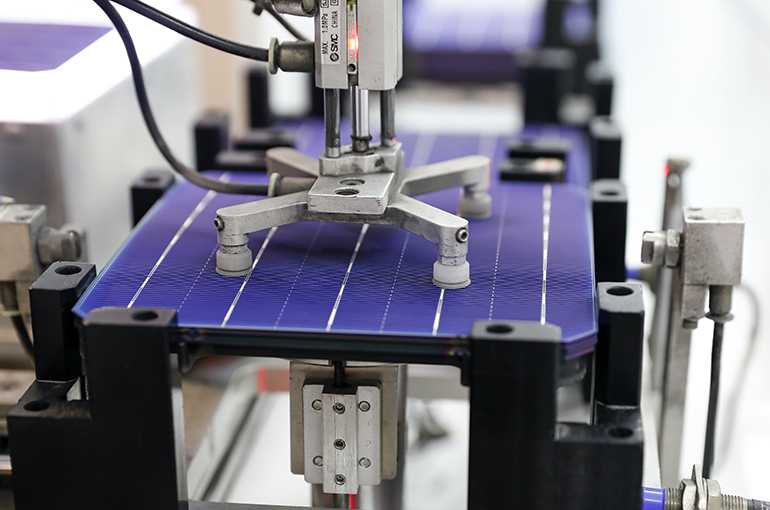 Price of Chinese Solar Modules Fell 42% Last Year, Report Shows
Price of Chinese Solar Modules Fell 42% Last Year, Report Shows(Yicai) Jan. 9 -- The price of solar modules made by Chinese companies dropped 42 percent last year, according to a recent report.
In December, the average price of Chinese solar modules fell to 15 US cents per watt, a report by UK consulting firm Wood Mackenzie showed. Meanwhile, prices for solar modules made by Indian, European, and US companies were 22 US cents, 30 US cents, and 40 US cents per watt, respectively.
The main reason behind Chinese photovoltaic companies' lower prices was their dominance in the global solar industry, Wood Mackenzie noted, adding that advanced technology, low costs, and a complete supply chain also played a role.
"China's solar manufacturing expansion has been driven by high margins for polysilicon, technology upgrades, and for developing local manufacturing in overseas markets," said Sun Huaiyan, a senior advisor at Wood Mackenzie.
As solar modules, including polysilicon, wafer, and cell, made in China are substantially cheaper than in Europe and the US, China will hold over 80 percent of the global capacity across the whole solar module supply chain from this year, Wood Mackenzie predicted.
Strong government policies in overseas markets have started to increase local solar manufacturing, but they are still not cost-competitive compared to Chinese supply, Wood Mackenzie noted. Experts believe countries should promote more commercial applications for their PV industries to reach the same scale as China.
Wood Mackenzie also predicted that over one terawatt of wafer, cell, and module capacity will come online by the end of this year, meaning that China's capacity will be sufficient to meet the annual global demand now through to 2032, based on forecasts of annual demand growth.
"China will still dominate the global solar supply chain and continue to widen the technology and cost gap with competitors," Sun pointed out.
The number of solar cells exported from China rose over 42 percent in the first 11 months of last year from a year earlier, while their value inched up only 1 percent, according to data from China's General Administration of Customs.
China's power generation installed capacity was about 2.85 billion kilowatts as of Nov. 30, up 14 percent from a year earlier, according to the National Energy Administration. Among them, the installed capacity of solar power generation was about 560 million kilowatts, an increase of 50 percent in the period.
A total of 126,400 patent applications for solar cell technologies have been filed in China, ranking first in the world, CCTV reported, citing data from the State Intellectual Property Office.
Attention should be paid to the home market effect, which implies that the connection between a country's market size and its exports is not accounted for in trade models that are based only on comparative advantage, Cui Fan, a professor at the School of International Business and Economics at the University of International Business and Economics, told Yicai.
"A large domestic demand will promote industries to occupy more external demand," Cui noted. "This is an important reason why China's new energy industry can generate export advantages."
Editor: Futura Costaglione